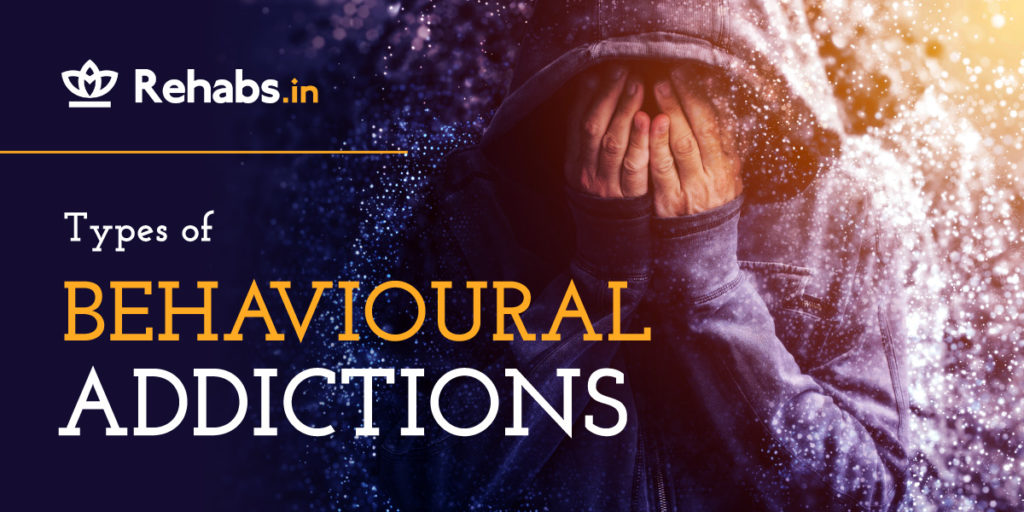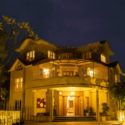Types of Behavioural Addictions

What are behavioural addictions?
When we hear the word addiction, the first thing that comes to mind is alcohol or drug addiction. However, experts say that any activity or substance that is stimulating in nature can be addictive. Any behaviour, from gambling to pornography to using a cellphone, can be an addiction. They are also categorized as impulse control disorders.
Behavioural addiction is characterised by a recurrent failure to control urges to engage in a particular behaviour or activity. Preoccupation with the activity to the extent that it becomes the centre of their thoughts, feelings and behaviour in life. These behavioural addictions have many similarities with substance addictions, even though there is a lack of chemical dependence in the former.
Types of Behavioral addictions
Gambling
Gambling addiction involves a recurrent, persistent urge to engage in gambling which leads to significant impairment and negative consequences in their life. This condition is diagnosed as Gambling disorder in DSM-5 and as pathological gambling in ICD-10. This is the only behavioural disorder listed in the DSM manual. There are certain signs that can help distinguish regular gambling from addiction like gambling:
- Spending more and more money each time to get the same amount of high
- Feeling restless when not able to gamble
- There have been multiple failed attempts to stop gambling
- Spending a lot of time thinking and planning about gambling
- Using gambling as a coping mechanism to deal with emotional problems in life
- Constantly playing in the hope of gaining back lost money
- Lying to friends and family about the extent of gambling
- Impairment of financial or work or social or family life due to gambling
- Repeatedly borrowing money for the purpose of gambling
People with gambling addiction fail to recognise the extent to which the problem is affecting their lives. There are several treatment options available for gambling, such as psychotherapies like CBT, Behavioral Therapy, and support groups like Gamblers Anonymous. Pharmacological treatment can also be used in this case.
Gaming
Gaming disorder involves loss of control over gaming, neglecting other activities to play video games and continuing to play even after it impacts them negatively. Gaming is a very common activity among adolescents and young adults today. Only if the gaming activity is causing significant problems in their life it can be considered a disorder. Here are a few signs of gaming disorder:
- Preoccupation with thoughts about gaming
- Feeling anxious and restless when gaming is taken away
- Spending increasing amounts of time to achieve the same high
- Multiple unsuccessful attempts to control gaming
- Not engaging in any other activities previously of interest
- Gaming compulsively even after negative consequences
- Lying about their gaming habit
- Using gaming to cope with negative emotions
- Having significant trouble in education, work or relationships due to gaming
Gaming can lead to increased aggression based on the content of the games. People with gaming addiction are more likely to experience mood or anxiety disorders.
Sex
Sexual addiction involves failure to control sexual urges resulting in recurrent sexual behaviour. It is diagnosed as Compulsive Sexual Behavior Disorder (CSBD) in ICD-11. A person with sex addiction or CSBD is so preoccupied with sex that they might ignore other activities and responsibilities in their life. They might repetitively engage in sexual behaviour despite negative consequences and get little pleasure out of it. Here are a few signs of sex addiction:
- Failure to control sexual urges
- Neglecting personal and other responsibilities, not engaging in other activities
- Unsuccessful attempts to reduce sexual behaviour
- Continuing to engage in sexual activities even after experiencing negative consequences such as marital conflict or health issues
- Continuing sexual behaviour even if it does not feel pleasurable
- Severe distress due to sexual behaviour in various aspects of their life such as work, family or social life.
There is an increased risk for sexually transmitted infections in people with CSBD. Sexual addiction can be treated by a medical professional using medication and behavioural therapies.
Pornography
Pornography addiction involves watching excessive pornographic content despite negative consequences. Medical professionals and experts refer to this disorder as more compulsive than addictive. A lot of people watch pornographic content; it is important to distinguish normal viewing from compulsive conditions. Here are a few signs to look out for:
- Spending increasing amounts of time watching pornography
- Continuing viewing porn even after negative impacts
- Failed attempts to stop or reduce pornography viewing
- Ignoring other tasks, activities or responsibilities
- Viewing in social situations like at work or in class
- Experiencing guilt or depression from viewing the content
- Hiding or lying about pornography viewing
- Preoccupation with thoughts about porn even when not watching
- Feeling upset or restless when cut off from pornography viewing
People with a compulsive urge to watch pornography may lose track of time while viewing. This can be treated with the help of mental health professional. Although this might be a little uncomfortable to discuss with someone else, it is important to get the right treatment.
Social media
The use of social media is becoming more and more popular in today’s world. It is not uncommon for people to spend hours together on social media. But if one uses social media compulsively and excessively, they may show signs similar to other behavioural addictions. It is important to distinguish between regular use vs unhealthy compulsive use of social media. Here are a few signs to look out for:
- Experiencing anxiety and restlessness when unable to check social media
- Constantly checking social media even while having face-to-face interactions with other people
- Hiding how much time is spent on social media
- Isolating oneself from family or friends in real life
- Not engaging in other activities that were previously enjoyed
- Excessive social media use impacts academic performance or work, or other aspects of life
- Using social media as an escape from real-life problems
- Preoccupation with thoughts about social media, even when not using
Excessive use of social media can lead to Fear of Missing out (FOMO), low self-esteem, body image issues and anxiety. It may lead to disturbance in sleep and their daily routine. There are a few things people can do to control usage on their own, like turning off notifications, deleting the app or tracking time spent on social media. You can also schedule a session with a therapist to manage this better.
Other than the ones mentioned above, there are a few other behavioural addictions. Some of them are food addiction, love addiction, shopping addiction, and exercise addiction. Behavioural addictions show similar signs and symptoms. Although there is a lot of debate around whether these can be called “addictions”, treatment is widely available for all of these problems.
Sources:
Alavi, S. S., Ferdosi, M., Jannatifard, F., Eslami, M., Alaghemandan, H., & Setare, M. (2012). Behavioral addiction versus substance addiction: Correspondence of psychiatric and psychological views. International journal of preventive medicine, 3(4), 290.
Blanco, C., Moreyra, P., Nunes, E. V., Saiz-Ruiz, J., & Ibanez, A. (2001, July). Pathological gambling: addiction or compulsion?. In Seminars in clinical neuropsychiatry (Vol. 6, No. 3, pp. 167-176). https://doi.org/10.1053/scnp.2001.22921
Duffy, A., Dawson, D. L., & Das Nair, R. (2016). Pornography addiction in adults: A systematic review of definitions and reported impact. The journal of sexual medicine, 13(5), 760-777. https://doi.org/10.1016/j.jsxm.2016.03.002
Darvesh, N., Radhakrishnan, A., Lachance, C. C., Nincic, V., Sharpe, J. P., Ghassemi, M., Straus, S. E., & Tricco, A. C. (2020). Exploring the prevalence of gaming disorder and Internet gaming disorder: a rapid scoping review. Systematic Reviews, 9(1). https://doi.org/10.1186/s13643-020-01329-2
Levine, S. B. (2010). What is sexual addiction?. Journal of sex & marital therapy, 36(3), 261-275. https://doi.org/10.1080/00926231003719681
PhD, G. R. M., Ritchie, P. L., Maercker, A., & Rebello, T. (2022). A Psychological Approach to Diagnosis: Using the ICD-11 as a Framework (1st ed.). American Psychological Association. https://icd.who.int/en
Sun, Y., & Zhang, Y. (2021). A review of theories and models applied in studies of social media addiction and implications for future research. Addictive Behaviors, 114, 106699. https://doi.org/10.1016/j.addbeh.2020.106699













